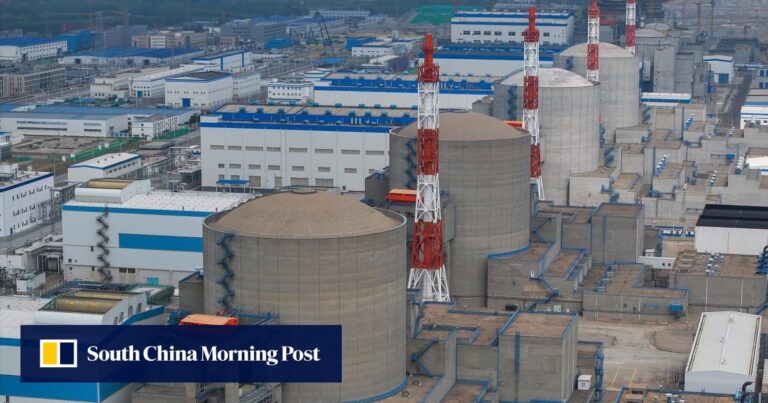China’s first industrial nuclear steam power project has begun production as Beijing accelerates the diversification of nuclear energy and promotes energy decarbonization.
The project, named Heqi 1, officially began operations on Wednesday, according to its builder, China National Nuclear Corporation (CNNC), a state-owned enterprise with a complete nuclear technology industrial framework.
According to CNNC, the Heqi-1 pipeline will be able to transport 4.8 million tonnes of steam per year from the Tianwan Nuclear Power Plant in Lianyungang city, Jiangsu province, to the Lianyungang Petrochemical Industrial Base via a 23.3-kilometer (14.5-mile) aboveground pipeline.
The project will use steam generated by the Tianwan power plant’s two turbine systems as its heat source, in a process CNNC describes as “boiling water”.
The nuclear reaction converts circulating cooling water into steam in high-pressure generators, which then boils water in the desalination plant and sends the resulting steam through pipelines to the petrochemical plants.
To ensure safety, the project has installed multiple radiation monitoring points to detect radioactivity in the steam in real time, and if any abnormalities are detected, the project will be shut down immediately, CNNC said.
Zhang Yi, chairman of Jiangsu Nuclear Power Co., told Xinhua on Wednesday that the project provides a new solution for the green upgrade of energy in the petrochemical industry.
The project is expected to reduce coal use by 400,000 tonnes per year, equivalent to reducing emissions of 1.07 million tonnes of carbon dioxide, 184 tonnes of sulfur dioxide and 263 tonnes of nitrogen oxides.
This is equivalent to planting 2,900 hectares of trees every year and will save the petrochemical plant more than 700,000 tonnes of carbon emissions annually, according to CNNC, who did not disclose the cost of the project in their report.
Heqi-1 represents China’s efforts to accelerate the diversification of nuclear energy to meet its commitments to achieve “peak carbon emissions” by 2030 and “carbon neutrality” by 2060.

While many Western countries are turning to renewable energy for a greener energy supply, China already leads the world in nuclear power.
The country aims to reduce greenhouse gas emissions and is applying nuclear technology to all aspects of people’s lives, including industry, agriculture, medicine, environmental protection and security.
In November 2022, a district heating demonstration project, the first nuclear heating project in northeast China, began operation in Hongyanhe, Liaoning Province.
Later, China’s first industrial nuclear thermal power project began production in Haiyan county, Zhejiang province, Xinhua reported.
The State Council last month released an action plan for energy conservation and carbon reduction, noting that energy consumption and carbon dioxide emissions per unit of GDP are projected to fall by about 2.5 percent and 3.9 percent, respectively, in 2024.
The council spoke of the orderly replacement of electric drive with steam drive and encouraged petrochemical plants to consider using atomic energy to provide steam and heat.

